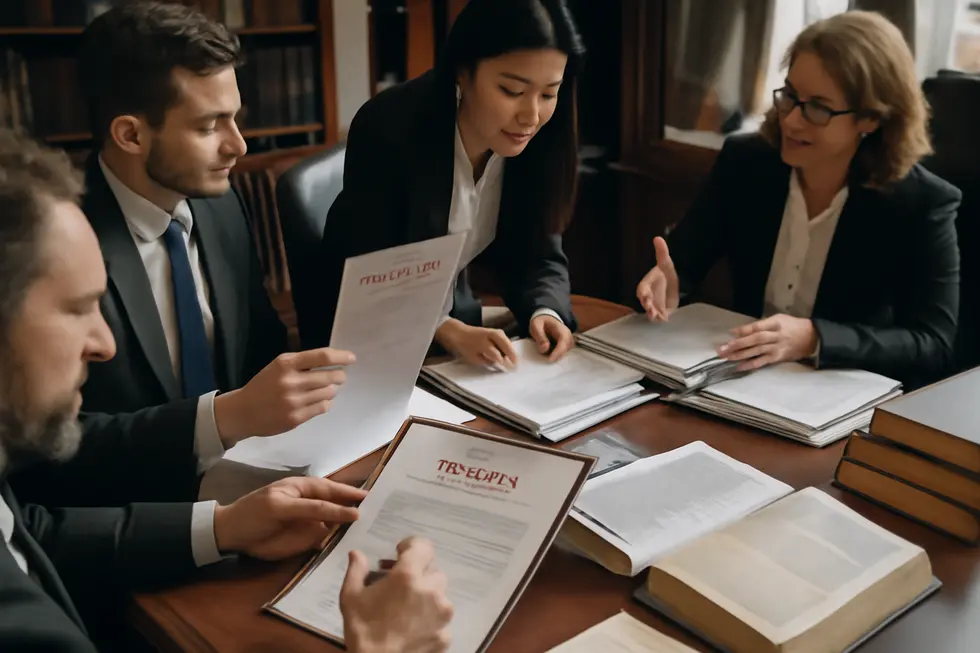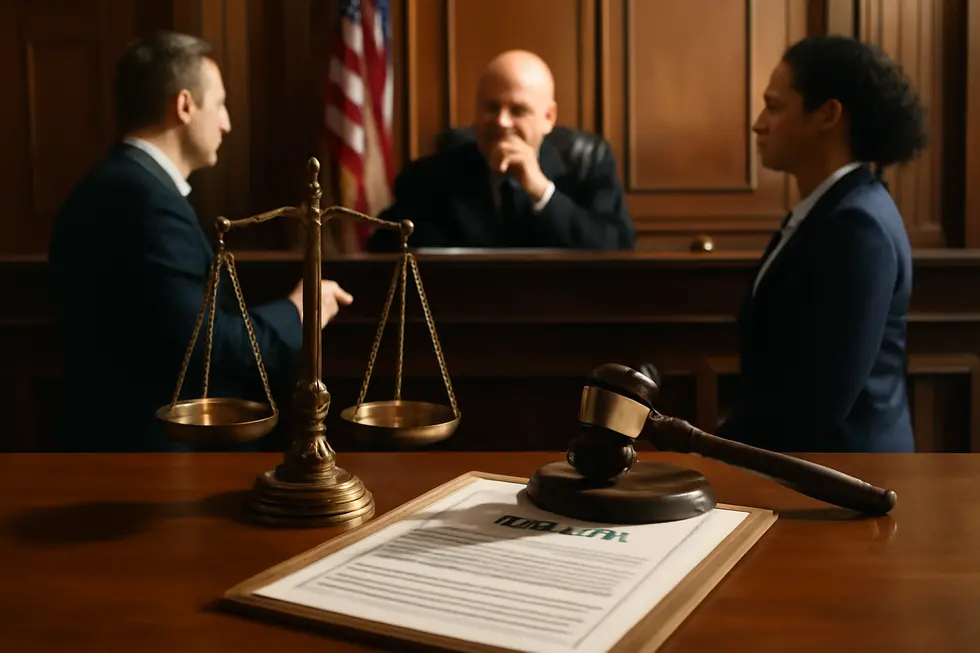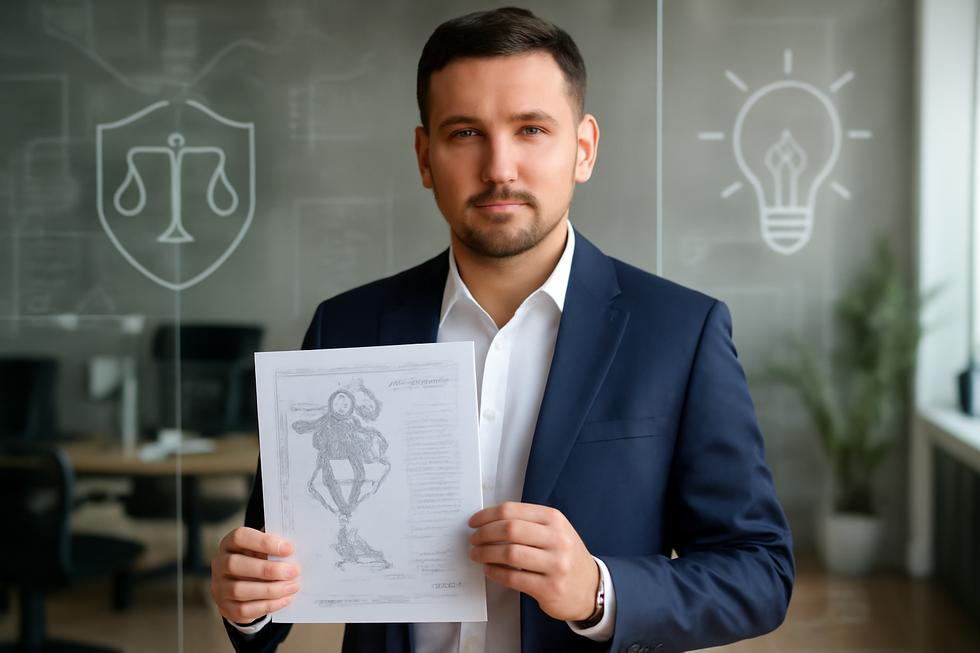Introduction
Legal patents are pivotal assets for business owners who seek to protect their innovations and maintain competitive advantage. Securing a patent grants exclusive rights to an invention, enabling control over its commercial use. Beyond protection, patents foster business growth by safeguarding novel ideas, designs, or plant varieties. This comprehensive guide navigates the fundamentals of legal patents including their types and requirements, the detailed application and enforcement processes, the importance of understanding territorial boundaries and international patent considerations, and the landscape of legal jurisdictions governing patents along with remedies for infringement. Each chapter builds on foundational insights to provide business owners with the knowledge necessary to effectively secure, manage, and enforce their patents, ensuring innovation translates into lasting business value.
Tables of Contents
Chapter 1: The Fundamentals of Legal Patent: Essential Definitions and Legal Boundaries
- Defining Legal Patents and Their Protective Boundaries Within Intellectual Property
- Diving into Patent Categories: Understanding Utility, Design, and Plant Patents
- Understanding the Essential Patentability Criteria Behind Legal Patent Protection
Chapter 2: Legal Patent Application Process and Enforcement Mechanisms
- Harnessing Technology in Patent Filing and Enforcement Strategies
- Navigating Economic and Commercial Impacts in Patent Applications and Enforcement
- Navigating Global Dynamics: Geopolitical and Societal Influences on Patent Application and Enforcement
Chapter 3: Territorial Scope and International Considerations in Legal Patents
- Navigating Geographic Boundaries: Understanding Territorial Limits in Patent Rights and Licensing
- Overcoming Regulatory Hurdles and Compliance Challenges in International Patent Protection
- Navigating Global Patent Strategies: Balancing Territorial Rights and Economic Impact
Chapter 4: Legal Patent Law: Jurisdiction, Infringement, and Remedies
- Navigating Patent Jurisdiction and Enforcement: Understanding Legal Authority and Remedies
- Navigating Patent Infringement Claims: Jurisdiction, Analysis, and Enforcement Remedies
- Navigating Patent Infringement: Enforcement Strategies and Legal Recourse
Chapter 1: The Fundamentals of Legal Patent: Essential Definitions and Legal Boundaries

1. Defining Legal Patents and Their Protective Boundaries Within Intellectual Property
A legal patent establishes a temporary, exclusive property right granted by a government to an inventor. This right authorizes the patent holder to exclude others from making, using, selling, or importing the patented invention, typically for 20 years from the application filing date in the United States. Crucially, owning a patent does not inherently authorize the inventor to use the invention if it infringes upon prior patents. Instead, it secures the power to prevent unauthorized exploitation of the invention by others.
Patents are a pivotal form of intellectual property designed to incentivize innovation by offering inventors a monopoly in exchange for publicly disclosing their creation. To receive this protection, an invention must satisfy key requirements: it must be novel, meaning it is new and not previously known; non-obvious, indicating that the invention is not an evident development to experts; and useful, possessing practical application. Furthermore, the invention must belong to patent-eligible categories like processes, machines, manufactures, or chemical compositions.
The legal scope of a patent is defined by its claims, which delineate the exact boundaries of protection. These claims specify what aspects of the invention are exclusive to the patent holder, prohibiting others from unauthorized use within those boundaries. Understanding this scope is fundamental for inventors to safeguard their rights effectively. Patent claims can include independent and dependent types, covering methods, apparatus, compositions, or product-by-process inventions, each detailing the protected elements.
Federal patent agents assist inventors in navigating this intricate process by preparing and prosecuting patent applications before the USPTO, playing a significant role in securing legal patent protection. For inventors seeking guidance on intellectual property scope and protections, exploring resources on company intellectual property protection can provide valuable perspectives.
2. Diving into Patent Categories: Understanding Utility, Design, and Plant Patents
A comprehensive grasp of legal patents starts with understanding the distinct categories that define what protection an inventor can claim. The United States Patent and Trademark Office (USPTO) recognizes three fundamental types of patents, each designed to safeguard different aspects of creativity and invention.
Utility patents are the most prevalent and cover inventions that offer new and useful processes, machines, compositions of matter, or improvements thereof. Their 20-year term from the filing date enables inventors to protect how an invention functions or is applied, encompassing innovations as diverse as mechanical devices, chemical formulas, and software algorithms.
In contrast, design patents focus exclusively on the ornamental or aesthetic aspects of an article rather than its utility or function. Valid for 15 years from the grant date, these patents are crucial in industries where the visual appeal of a product plays a decisive role, such as in electronics, fashion, or furniture design. This protection helps prevent competitors from copying a product’s distinctive appearance.
Plant patents offer protection for asexually reproduced, newly discovered, or invented varieties of plants. This category is especially significant for agricultural and horticultural innovations that introduce unique breeds or cultivars.
Securing any one of these patents requires an invention to satisfy key legal standards: it must be novel, non-obvious to someone skilled in the field, and useful with a specific practical application. The patent application process itself involves a detailed submission that defines the scope of protection and undergoes rigorous examination to ensure these criteria are met.
For inventors navigating this complex process, understanding the distinct roles and protections of each patent type is essential for strategic intellectual property management.
3. Understanding the Essential Patentability Criteria Behind Legal Patent Protection
The foundation of securing legal patent protection rests on fulfilling strict patentability criteria that safeguard genuine innovation. Central to these requirements is novelty, meaning the invention must be entirely new, distinct from any prior art or existing disclosures. Patent examiners thoroughly assess previous inventions to confirm this originality. Equally important is non-obviousness, which ensures that the invention is not simply an evident improvement or combination for someone skilled in the relevant field. This criterion prevents trivial advances from gaining exclusive rights and encourages truly inventive contributions.
Beyond novelty and ingenuity, the invention must demonstrate utility—a clear, specific, and credible practical use. Without this, patent rights cannot justify their temporary monopoly. Additionally, patent law demands full disclosure (also known as enablement), requiring the inventor to describe the invention in enough detail to allow others skilled in the area to reproduce it without undue experimentation. This includes revealing the best mode of practicing the invention known during application, promoting transparency and future innovation.
Importantly, inventions must fall into patent-eligible subject matter, excluding abstract ideas, natural laws, or phenomena. A clear written description and precise claims delineate the invention’s scope, further defining what the patent protects. These intertwined requirements collectively form the legal gateway to patent protection, balancing the inventor’s rights with public knowledge advancement.
For inventors seeking to navigate these complexities, comprehensive guidance on patentability and application steps is available at trusted intellectual property resources.
Chapter 2: Legal Patent Application Process and Enforcement Mechanisms

1. Harnessing Technology in Patent Filing and Enforcement Strategies
Harnessing technology has profoundly reshaped the patent application and enforcement landscape, enhancing precision and efficiency from filing to litigation. The United States Patent and Trademark Office (USPTO) leads with its robust electronic submission portal, enabling applicants to file, pay fees, and track progress seamlessly online. This digital shift, with over 99% of applications now filed electronically, reduces processing times and administrative costs while increasing transparency.
A patent application requires meticulous disclosure, detailing the invention and inventor information accurately. The USPTO further categorizes inventions by technology fields—differentiating between predictable and unpredictable arts—to tailor examination rigor. Examiners evaluate applications for novelty, usefulness, and non-obviousness, with applicants able to amend submissions or appeal through the Patent Trial and Appeal Board, whose decisions reflect complex legal-technical balancing.
International protection follows a related technological path, primarily through the Patent Cooperation Treaty system, which provides global publication and a unified filing process, though eventual patents must be secured country-by-country.
Patent enforcement blends technological complexity with legal rigor. Federal courts offer comprehensive litigation venues, including discovery and jury trials, to award damages or injunctions against infringement. Patent holders may also leverage the International Trade Commission to impose import bans swiftly, curbing infringing foreign goods without monetary damages but with immediate market impact.
Specialized fields, like emerging quantum technologies, demand not only legal insight but advanced technical expertise to identify infringement and construct viable claims. This intersection of technology and law underscores the modern challenges and tools available to protect intellectual property.
For inventors navigating these processes, authoritative resources such as the USPTO and Patent and Trademark Resource Centers provide essential, technology-oriented guidance throughout filing and enforcement.
2. Navigating Economic and Commercial Impacts in Patent Applications and Enforcement
The process of obtaining and enforcing legal patents carries profound economic and commercial consequences that shape innovation ecosystems and market dynamics. Lengthy patent examination backlogs create uncertainty, delaying inventors’ access to exclusive rights, which discourages timely investment and hinders the commercialization of cutting-edge technologies. This challenge disproportionately affects startups and small enterprises that rely heavily on swift patent grants to secure funding and compete effectively. Additionally, the efficient allocation of resources and appropriate fee structures at patent offices are critical to maintaining high-quality examinations, essential for preserving the patent’s economic value in fast-evolving industries, including artificial intelligence.
On the commercial front, enforcement mechanisms serve as the backbone that guarantees the patent holder’s exclusive market position. While litigation and administrative actions to address infringement can be expensive and complex, they are crucial in protecting innovation-driven revenue streams and deterring unauthorized exploitation. Strong enforcement regimes contribute to stable commercial environments, encouraging licensing agreements and cross-border investments. Jurisdictions known for reliable enforcement attract more foreign innovators, enhancing international technology transfer and expanding economic opportunities. Infringement penalties, often including substantial damages and injunctive relief, shape competitive behavior, underscoring the strategic importance of robust patent rights.
Together, the application and enforcement frameworks influence economic growth by fostering innovation incentives, protecting investments, and sustaining competitive markets. These intertwined elements ensure that legal patents function as valuable assets driving technological progress and commercial success. For further insights into intellectual property protections and business implications, exploring detailed resources on copyright and patent fundamentals can provide valuable guidance.
3. Navigating Global Dynamics: Geopolitical and Societal Influences on Patent Application and Enforcement
Navigating Global Dynamics: Geopolitical and Societal Influences on Patent Application and Enforcement
The legal patent application process and enforcement mechanisms do not exist in isolation but are profoundly shaped by geopolitical and societal forces. National patent laws often mirror a country’s economic priorities and social values, which influences how inventions are protected and commercialized. For instance, some nations prioritize affordable access to medicines over broad patent monopolies, as seen in patent regimes that allow pharmaceutical process patents but limit product patents. This is a reflection of societal goals that favor public health and local industry growth.
Internationally, patent enforcement is tangled with geopolitical tensions and global trade dynamics. Multinational corporations strategically file patents in multiple jurisdictions to secure market exclusivity, while foreign courts’ rulings and regulatory actions can impact U.S. patent disputes, especially in sectors like pharmaceuticals. Trade sanctions and export controls further complicate technology transfers and enforcement, restricting access to innovation in targeted regions.
Moreover, the global race for technological supremacy, especially in areas like artificial intelligence, demonstrates how state policies and geopolitical ambitions drive patenting activity and legal frameworks. Countries channel substantial resources into patent offices and innovation infrastructure, tightening eligibility criteria and enforcement to maintain competitive advantages.
Thus, patent application and enforcement are deeply intertwined with a nation’s political landscape and societal concerns, influencing global intellectual property strategies and outcomes. For inventors and businesses, understanding these dynamics is vital to effective patent protection and leveraging the full scope of legal rights in a complex international environment.
For more insights on intellectual property rights, visit Trademark2Go’s guide on categories of intellectual property rights.
Chapter 3: Territorial Scope and International Considerations in Legal Patents

1. Navigating Geographic Boundaries: Understanding Territorial Limits in Patent Rights and Licensing
Navigating Geographic Boundaries: Understanding Territorial Limits in Patent Rights and Licensing
Patent rights are inherently territorial, meaning they are only enforceable within the jurisdictions where they have been officially granted. This fundamental principle requires precise definition of the geographic scope when drafting patent licensing agreements, as the rights granted will apply strictly within specified countries or regions. Licensing patents without clear territorial boundaries risks legal conflicts and regulatory non-compliance.
Several critical considerations come into play when defining these geographic limits. Different nations enforce distinct regulatory frameworks, especially in sensitive fields like pharmaceuticals and biotechnology, where licensing may be confined to territories where necessary approvals have been secured. Market strategy also influences territorial scope; licensors often reserve exclusivity for certain areas to prevent market overlap and may retain rights elsewhere to accommodate future growth.
International treaties such as the Paris Convention facilitate synchronization of patent protections by allowing claims of priority across member states, easing the coordination of multi-jurisdictional patent filings. Additionally, regional mechanisms like the European Union’s Unitary Patent streamline enforcement by providing a single patent valid across participating countries, simplifying territorial management.
Timing plays a role as well, with territorial rights often linked to the patent’s lifecycle and license duration to balance immediate exploitation with long-term strategy. Ultimately, clearly delineating geographic boundaries in patent rights ensures enforceability, regulatory compliance, and commercial clarity.
For inventors and businesses seeking deeper insights into licensing scope and regulatory requirements, resources such as the USPTO and Patent and Trademark Resource Centers offer valuable guidance.
2. Overcoming Regulatory Hurdles and Compliance Challenges in International Patent Protection
The territorial nature of patent rights fundamentally shapes the regulatory and compliance challenges faced in securing international protection. Because patents are granted and enforced on a country-by-country basis—or regionally, as with the European Unitary Patent system—rights holders must carefully tailor strategies to address jurisdictional fragmentation and varying legal frameworks. This fragmentation means inventors cannot rely on a single patent to protect their invention worldwide; instead, they must navigate diverse patentability standards, enforcement regimes, and procedural nuances across multiple markets.
Complicating matters further, divergent national laws may exclude certain inventions from patentability or set distinct compliance obligations. These differences require patent owners and their legal counsel to adapt applications and enforcement approaches to satisfy localized rules, underscoring the importance of detailed knowledge of international patent systems. While mechanisms such as the Patent Cooperation Treaty facilitate streamlined filing across jurisdictions, they do not confer a unified international patent, leaving territorial protection segmented.
Licensing introduces additional complexities, where territorial rights must be clearly defined to prevent anti-competitive behavior. Broad territorial licenses risk regulatory scrutiny, especially in critical technology sectors, while narrowly tailored geographic scopes can balance market expansion with compliance. Enforcement across borders often encounters judicial conflicts, illustrated by recent disputes involving anti-suit injunctions and standard essential patents.
Successfully managing these regulatory and compliance challenges demands integrated strategies that harmonize territorial licensing, anticipate antitrust risks, and address enforcement obstacles. This approach is critical for maintaining patent value and protecting inventions amidst a patchwork of national laws and evolving international cooperation frameworks.
For more on the strategic importance of clear licensing terms and compliance considerations, see insights at territorial clauses and antitrust risks in patent licensing agreements.
3. Navigating Global Patent Strategies: Balancing Territorial Rights and Economic Impact
Patent rights are intrinsically tied to specific jurisdictions, with enforceability strictly limited to where patents are granted. This territorial nature forces inventors and companies to devise patent strategies that align with their business goals and geographic realities. Choosing where to obtain patent protection is a careful exercise in strategic planning, where the potential markets for sales, locations of manufacturing, and future expansion plans all play critical roles. Given the high costs involved in securing and maintaining patents, optimizing these investments to gain maximum market exclusivity without undue expense is essential.
Internationally, businesses often leverage patent licensing agreements with defined geographic limits to enter foreign markets efficiently. Such licensing mitigates direct entry costs and complexities while fostering partnerships with local entities. However, the scope of these licenses must be carefully managed to avoid anti-competitive concerns, as overly broad exclusivity may trigger regulatory scrutiny.
The Patent Cooperation Treaty (PCT) simplifies the international patent application process by allowing a single initial filing that covers multiple countries. This approach offers up to 30 months for inventors to assess markets and refine strategies before incurring national filing costs. Still, the PCT does not grant patents outright; national authorities make final decisions, and additional fees for translations and local filings remain necessary.
Economically, businesses must weigh the balance between protection costs and the benefits of exclusive rights in key regions. Prioritizing countries with strong sales potential or significant competitive threats ensures an optimal return on investment. Additionally, structuring the timing and duration of licenses to correspond with the patent’s lifecycle helps maximize the value derived from exclusive rights.
This complex interplay of territorial law, licensing strategy, and economic considerations is essential for effectively navigating the landscape of legal patents and safeguarding innovation on an international scale. For deeper insights on trademark and intellectual property protection, visit https://trademark2go.com/company-intellectual-property-protection/.
Chapter 4: Legal Patent Law: Jurisdiction, Infringement, and Remedies

1. Navigating Patent Jurisdiction and Enforcement: Understanding Legal Authority and Remedies
Navigating Jurisdiction and Enforcement in Patent Law
Legal patent disputes hinge critically on jurisdiction, which determines the courts or tribunals authorized to hear cases and the applicable procedural rules. Jurisdiction is influenced by geography, monetary value, and the nature of the dispute, varying significantly across countries. For instance, in India, patent infringement claims start at the district court level, but if validity is contested, the matter advances to the High Court, ensuring expertise on complex issues. Germany adopts a specialized approach, separating patent validity challenges from infringement claims by allocating them to the Federal Patent Court and regional courts respectively. The United States centralizes infringement cases in federal district courts, with the Patent Trial and Appeal Board (PTAB) offering an administrative forum for swift validity challenges.
Infringement involves unauthorized actions such as making, using, or selling a patented invention. Proof depends on detailed technical analysis comparing the accused product or process against patent claims, often requiring expert testimony. Jurisdictions differ over whether infringement and validity are tried concurrently or separately, balancing efficiency and specialized knowledge.
Remedies aim to halt infringement and compensate patent holders. Courts typically grant injunctions to prevent ongoing violations and award damages for losses incurred. Some jurisdictions permit provisional injunctions to curb harm during litigation, while courts may order destruction of infringing goods. Administrative bodies like the PTAB can invalidate patents but cannot impose remedies such as damages.
This jurisdictional and remedial framework reflects a global effort to combine technical expertise with judicial fairness, protecting innovation while providing clear pathways to resolve disputes effectively. For a deeper understanding of intellectual property protections and related legal mechanisms, exploring trademark protection offers valuable context within the broader IP landscape.
2. Navigating Patent Infringement Claims: Jurisdiction, Analysis, and Enforcement Remedies
Patent infringement disputes unfold within a well-defined legal framework that begins with establishing the proper jurisdiction, continues through meticulous infringement analysis, and culminates in the pursuit of effective remedies. Jurisdiction is foundational, as courts must determine their authority to hear a patent case. In the United States, federal district courts handle these matters, with appeals directed to the Federal Circuit to ensure consistent patent law interpretation. Similarly, India designates district courts based on where the infringement occurs or where the accused party conducts business, aligning judicial scrutiny with geographic and practical relevance.
Determining infringement involves a detailed claim construction process where each element of a patent’s claims is compared to the accused product or method. This precise, element-by-element examination depends heavily on expert testimonies to unpack complex technical and legal details. The patent owner must show that the accused item incorporates every claim limitation or a legally equivalent component. Defendants often challenge these claims by arguing patent invalidity through evidence of prior art or procedural flaws, or by contending noninfringement if all claim elements are not met. The first sale doctrine can also limit enforcement after an authorized sale, offering additional defense.
Once infringement is substantiated, legal proceedings encompass complaint filing, responses, discovery, and potentially a trial. Courts may issue injunctions preventing further unauthorized use and award monetary damages that can be tripled in willful infringement cases. In the U.S., administrative venues like the Patent Trial and Appeal Board offer alternative means of contesting patent validity with streamlined procedures. This comprehensive system balances protecting innovators’ rights with guarding against unwarranted monopolies, underscoring the complex interaction among jurisdiction, infringement assessment, and remedies in patent law.
For inventors and businesses alike, understanding these intricacies is vital to navigating enforcement or defense effectively, ensuring that the legal framework supporting innovation functions with both rigor and fairness. See more on intellectual property protection fundamentals at company-intellectual-property-protection.
3. Navigating Patent Infringement: Enforcement Strategies and Legal Recourse
Effective enforcement of patent rights relies on a clear framework that intertwines jurisdictional authority, infringement identification, and robust remedies. Jurisdiction determines which courts or agencies preside over disputes, often centralized to promote fair and efficient resolutions. For instance, statutes in countries like India specify particular courts for infringement and related claims, ensuring streamlined handling of patent conflicts.
Infringement occurs when an unauthorized party makes, uses, or sells a patented invention without permission. Identification and investigation are pivotal; authorities may inspect products, demand evidence, or sample suspected goods to confirm violations. In some jurisdictions, such as China, administrative bodies have powers beyond judicial courts—they can directly order cessation of infringing acts, even conducting on-site inspections and product seizures.
Remedial options span civil, administrative, and criminal domains. Civil remedies typically include injunctions that halt infringing activities, damages to compensate losses, and sometimes courts order the destruction of infringing items. Administrative agencies may impose fines, penalties, or immediate stop orders without lengthy proceedings. Criminal sanctions come into play for serious violations like large-scale counterfeiting, providing deterrence through fines or imprisonment.
Enforcement effectiveness often depends on coordination among patent offices, courts, and customs authorities, especially in blocking unlawful imports. In parallel, legal provisions protect businesses from baseless infringement threats, preserving fair competition. Additionally, regulatory mechanisms like patent term adjustments can affect the timing and scope of enforcement, adapting protection periods to real-world delays.
Together, these multidimensional strategies equip patent holders with decisive tools to uphold their legal rights and foster innovation by deterring unauthorized exploitation. For more insights on intellectual property protections, exploring related trademark enforcement can offer complementary perspectives.
Final thoughts
Legal patents are invaluable tools that grant exclusive rights to innovative inventions, providing business owners with a strategic advantage in competitive markets. Mastery of patent fundamentals, the application and enforcement process, territorial scope, and legal frameworks for infringement ensures that businesses can effectively secure and defend their intellectual property. Navigating these complexities requires informed decision-making to transform ideas into protected assets that drive growth and value. By embracing the comprehensive understanding of legal patents, business owners can confidently protect their innovations and sustain long-term success.
Your IP is the foundation of your success – let’s protect it together before it’s too late. We can’t wait to help you turn your ideas into legally secured assets.
About us
undefined


